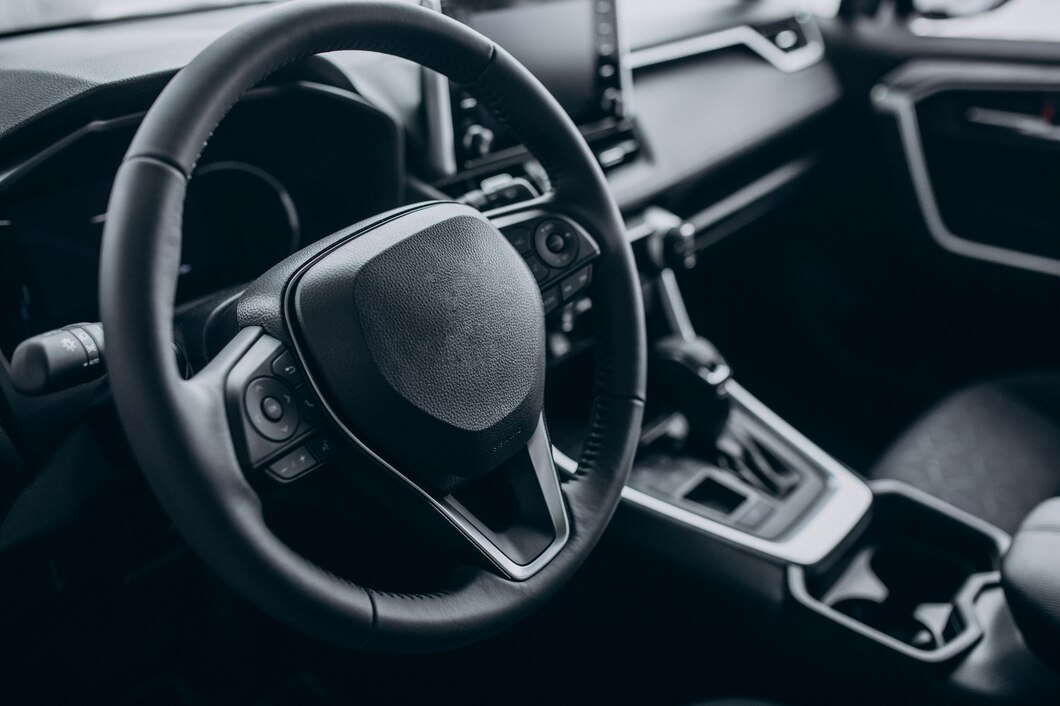The steering system is a critical component of any vehicle, allowing drivers to control the direction of their car with precision and ease. While all steering systems serve the same basic function, there are several different types, each with its own unique characteristics and advantages. Whether you’re a car enthusiast or simply curious about the mechanics of automobiles, understanding the various types of car steering systems is essential. Let’s delve into the world of automotive engineering and explore the different steering systems commonly found in cars today.
1. Rack and Pinion Steering:
Rack and pinion steering is one of the most common types of steering systems used in modern vehicles. It consists of a rack (a linear gear) connected to the steering wheel via a pinion gear. As the driver turns the steering wheel, the pinion gear rotates, causing the rack to move side to side. This motion is then transferred to the front wheels via tie rods, allowing for precise and responsive steering.
Advantages: Rack and pinion steering systems are known for their simplicity, reliability, and responsiveness, making them ideal for a wide range of vehicles, from compact cars to performance vehicles.
2. Recirculating Ball Steering:
Recirculating ball steering systems are commonly found in larger, heavier vehicles such as trucks and SUVs. In this type of system, a recirculating ball nut is connected to the steering shaft, which rotates as the driver turns the steering wheel. The ball nut engages with a series of recirculating ball bearings, causing them to move along a threaded rod and push or pull the steering linkage to turn the wheels.
Advantages: Recirculating ball steering systems are known for their durability and ability to handle heavy loads, making them well-suited for off-road and towing applications.
3. Variable Gear Ratio Steering:
Variable gear ratio steering, also known as variable-assist steering, is a technology that adjusts the steering ratio based on driving conditions. This type of system can vary the amount of steering effort required by the driver, making it easier to maneuver at low speeds and providing greater stability at high speeds. Variable gear ratio steering systems may use hydraulic or electric actuators to adjust the steering ratio.
Advantages: Variable gear ratio steering systems offer improved handling and maneuverability, especially in tight spaces and at high speeds, enhancing driver comfort and safety.
4. Electric Power Steering (EPS):
Electric power steering (EPS) systems have become increasingly popular in modern vehicles due to their efficiency and versatility. Instead of relying on hydraulic fluid and pumps like traditional power steering systems, EPS systems use an electric motor to assist with steering. The amount of assistance provided by the electric motor is controlled by a computer based on factors such as vehicle speed, steering wheel angle, and driving conditions.
Advantages: EPS systems offer improved fuel efficiency, reduced maintenance requirements, and the ability to incorporate advanced driver assistance features such as lane-keeping assist and parking assist.
5. Hydraulic Power Steering (HPS):
Hydraulic power steering (HPS) systems use hydraulic fluid and a pump to assist with steering, similar to traditional power steering systems. However, unlike electric power steering systems, HPS systems rely on hydraulic pressure generated by the engine to provide steering assistance. Hydraulic power steering systems are commonly found in older vehicles and some heavy-duty applications.
Advantages: Hydraulic power steering systems offer reliable performance and responsive steering feel, making them a popular choice for enthusiasts and drivers who prefer a more tactile driving experience.
Understanding the different types of car steering systems is essential for both automotive enthusiasts and everyday drivers. Whether you’re navigating city streets, cruising down the highway, or tackling off-road terrain, the steering system plays a crucial role in the overall driving experience. By familiarizing yourself with the various steering systems available, you can make informed decisions when purchasing a vehicle and better appreciate the engineering behind the wheel. So the next time you’re behind the wheel, take a moment to appreciate the intricate mechanics that allow you to steer with confidence and precision.











